
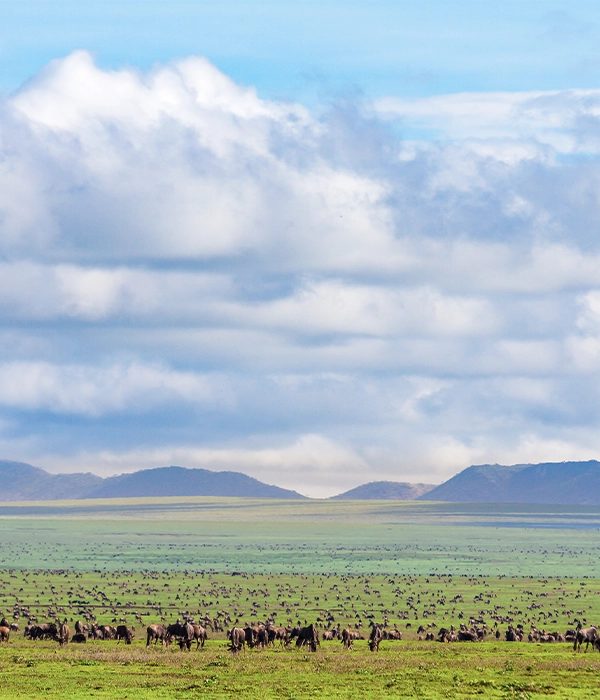
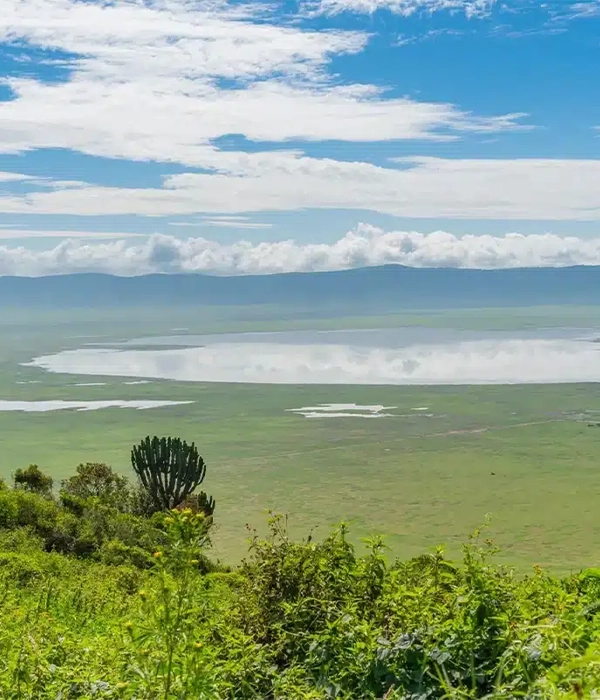

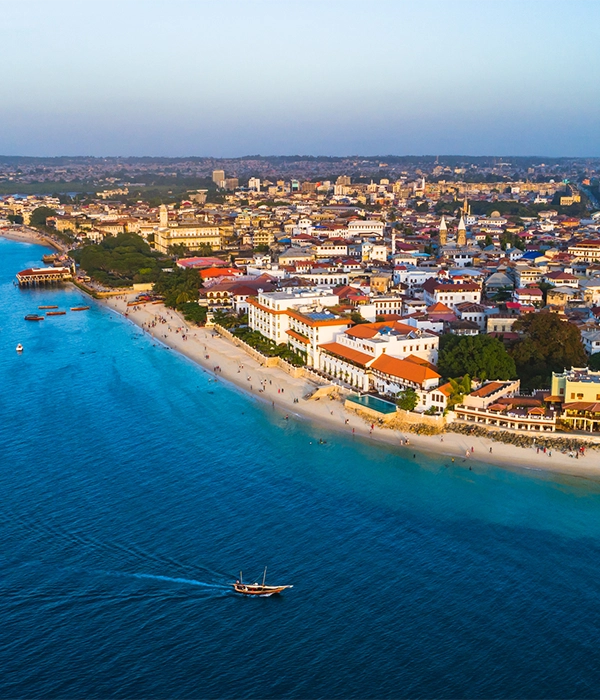



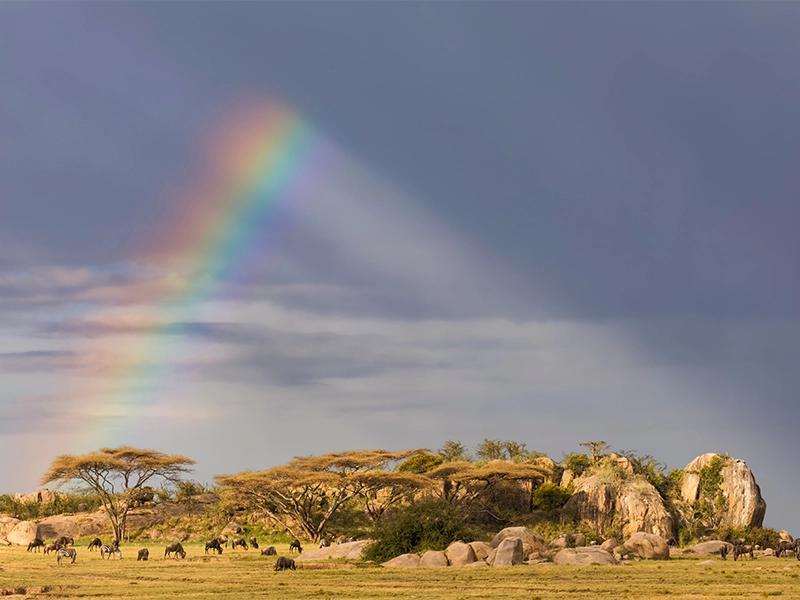
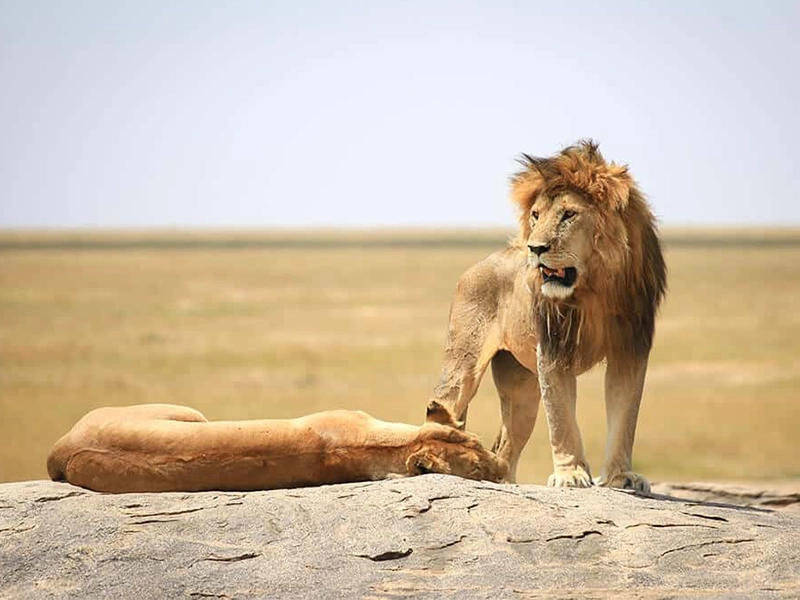
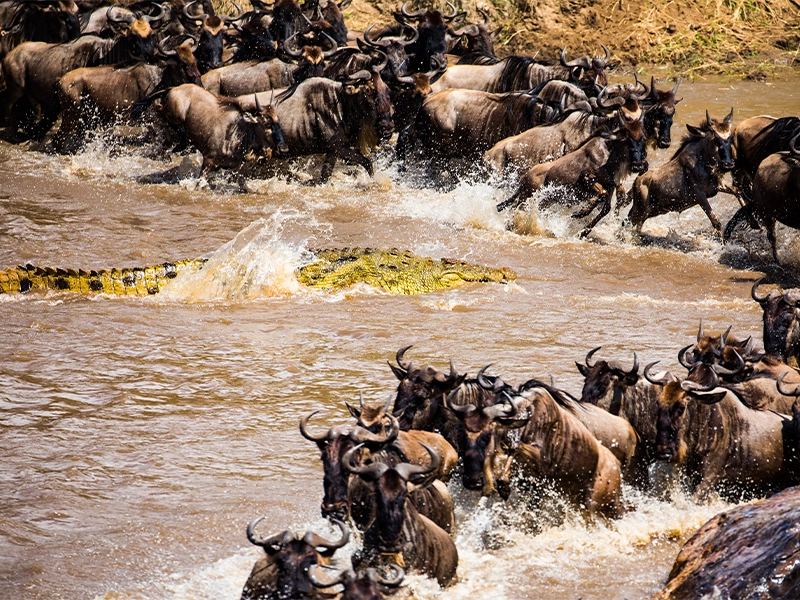

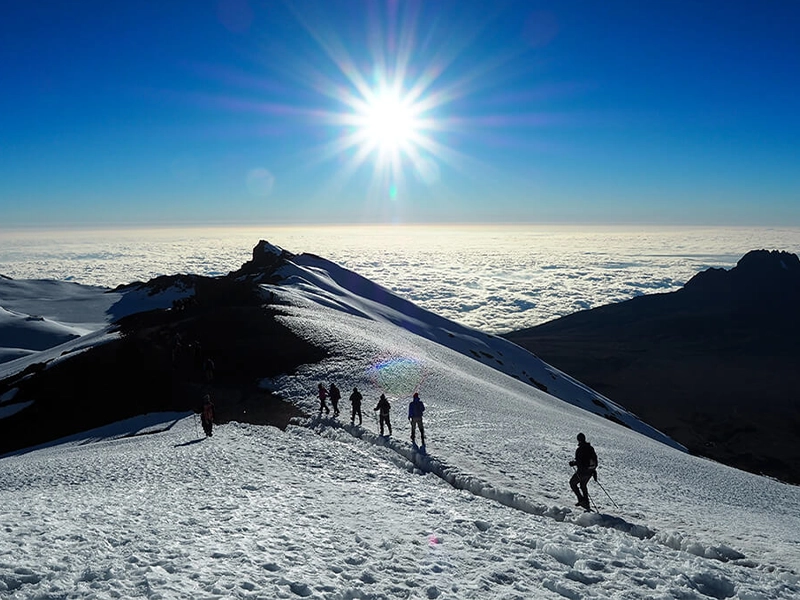
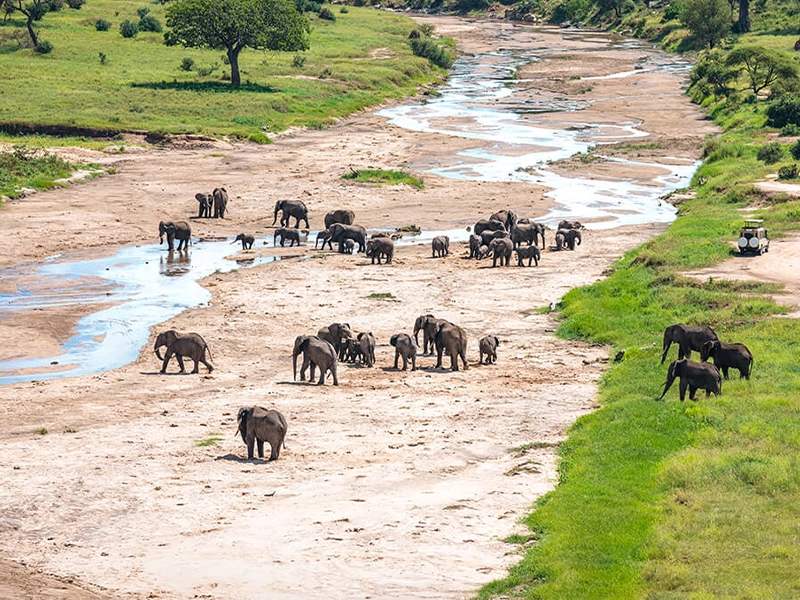

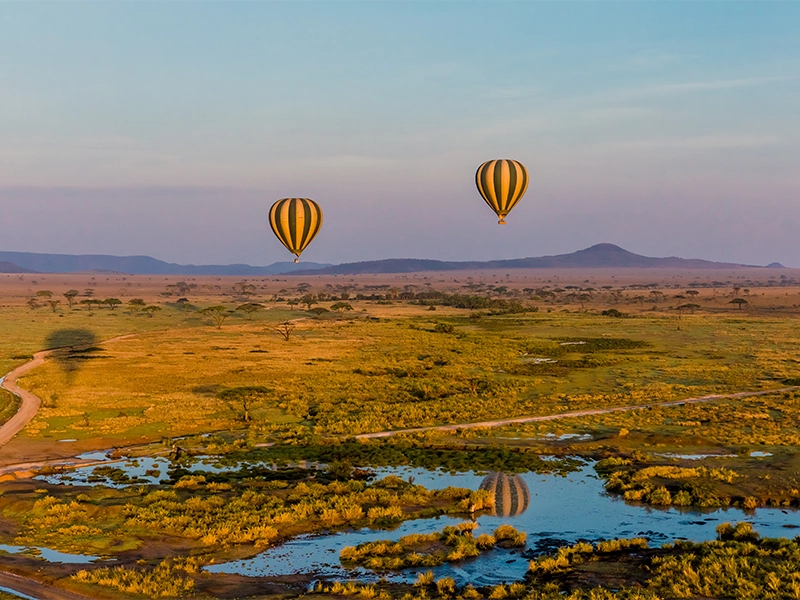


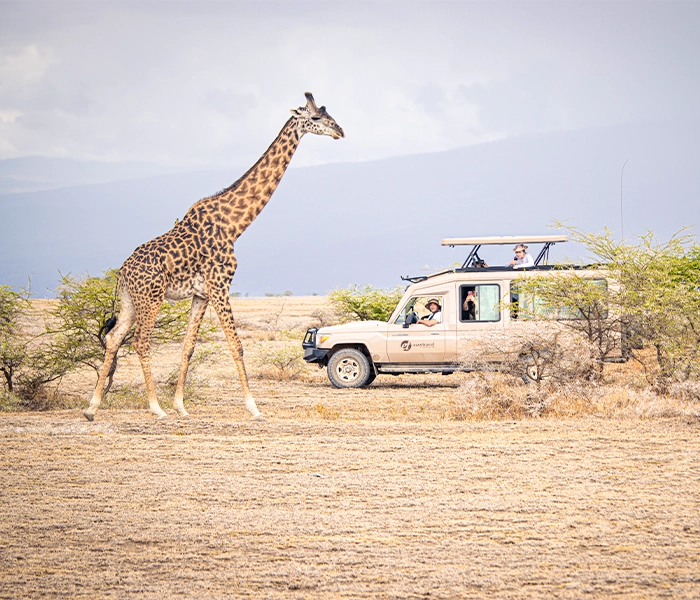
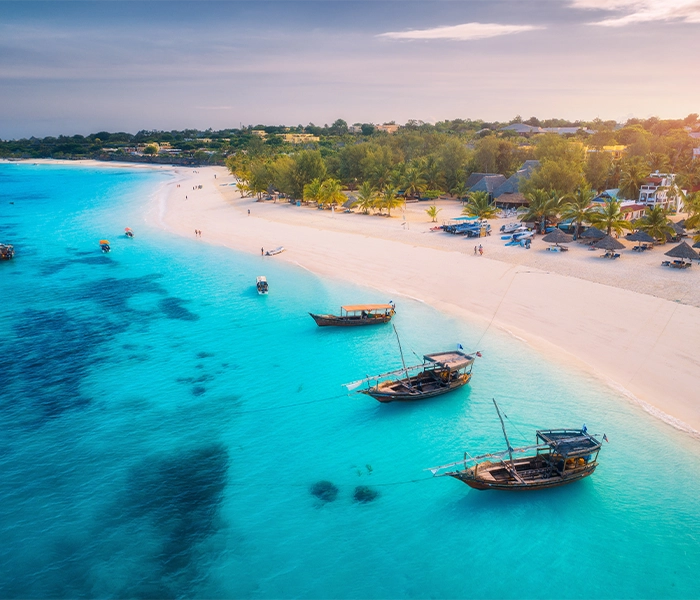
Why visit Tanzania?
Tanzania is a country full of seductive beaches, UNESCO World Heritage Site, astounding natural scenery, and some of the best wildlife viewing in Africa.
It’s a destination for the adventurous traveler. Whether you want to summit Mount Kilimanjaro, explore the depths of the Zanzibar Archipelago, or drive off into the Serengeti in search of the Great Migration.
For a slower pace that’s still full of adventure, float over the plains with a hot air balloon safari, unwind on the white sand beaches of Pemba Island, or explore the histories of Stone Town.
You can do all of this and more in Tanzania!
When is the best time to go to Tanzania?
The best time to go to Tanzania depends on what you want to see. There’s no bad time to plan a trip, but each season comes with its own highlights.
During the dry season (June to September), it’s prime safari weather. Wildlife flock to the watering holes, and the bush is thin, making it easy to spot those elusive Big Cats.
For trekking, June to October are the best months to climb Kilimanjaro. The weather is dry, and you’ll have a much easier time summiting the highest mountain in Africa.
In the wet season (October to April), you’ll have prime viewing for bird watching and baby animals. With over 1,000 native bird species and migratory birds from Europe and North Africa, there’s plenty to see if you don’t mind a bit of rain.
Which are the best National Parks in Tanzania?
With 22 national parks to choose from, it can feel overwhelming trying to plan your Tanzania safari. Here’s a quick breakdown to help you decide between the best national parks in Tanzania:
Northern circuit:
Serengeti National Park, Tarangire National Park, Ngorongoro Crater, Kilimanjaro National Park, and Lake Manyara National Park.
Southern circuit:
Nyerere National Park and Ruaha National Park.
Western Circuit:
Gombe Stream National Park and Mahale Mountains National Park.
Eastern circuit:
Saadani National Park
These parks offer some of the best wildlife viewing in Tanzania, as well as unique landscapes you won’t find anywhere else.
What to see in Tanzania?
There are so many things to do in Tanzania. You could spend weeks or even months here and still find attractions and places to visit. Some of the top sights in Tanzania include Mount Kilimanjaro (one of the Seven Summits), Serengeti National Park (home of the Great Wildebeest Migration), Stone Town in Zanzibar, Pemba and Mafia Island, Arusha National Park, Ngorongoro Conservation Area (famous for its crater and Big 5 sightings), Tarangire National Park, Nyerere National Park (the largest game reserve in Africa) and Jane Goodall’s chimpanzee research in Gombe Stream National Park.
Where to stay in Tanzania
Tanzania has a variety of accommodation options to suit any budget. If you want to keep your costs as low as possible, book one of our basic tours. It includes all the camping equipment and stay at campsites within the different national parks.
Want some more creature comforts? Upgrade to a tented camp (glamping), and you won’t have to bring anything except your standard luggage. If you want to spoil yourself, book one of Tanzania’s luxury lodges. There are dozens of four and five-star camps to choose from with different price points and inclusions.
How many seasons are there in Tanzania?
There are four seasons in Tanzania. The Dry Season (June to October) is the most popular time of year to visit Tanzania. Accommodation and flight prices peak, and you’ll get to experience the Great Wildebeest Migration. January to February is the Green Season. It’s Tanzania’s second high season and another fantastic period to go on safari and see big cat action.
The Long Rain Season (March to May) is the best time to travel to Tanzania on a budget. You’ll find cheap flights and lodges knocking off as much as 50% off their standard rates. The only downside? The rains make some of the national parks inaccessible. The Short Rain Season (November to December) is a busy period despite the less-than-perfect weather. Travelers flock here for the end-of-year holidays, and accommodation prices are high.
Is Tanzania a safe country?
Yes, Tanzania is a safe country. It’s the largest East Africa nation and is one of the most peaceful countries on the continent.
One thing you’ll need to keep in mind before you arrive is the COVID travel restrictions to travel to Tanzania. While reported cases and deaths aren’t as high as other destinations, you’ll need to adhere to the safety protocols for the coronavirus in Tanzania.
All visitors to Tanzania must have a negative 96-hour PCR test on arrival. When you land at the airport, you’ll need to take a covid antigen test at your expense.
Should you need a negative PCR to board your flight back home, you can take a covid test in Tanzania by pre-booking your appointment with select clinics.
What is Tanzania weather like?
Tanzania’s weather depends heavily on where you are in the country and the time of the year. Due to its proximity near the equator and its size, you might find it hot and tropical on the coast but cool in the northern highlands.
If you want to go on safari in Tanzania, the best time to visit is during the dry seasons. January to February and June to early October, see hardly any rainfall and the wildlife flocks around the dwindling water holes. However, the two rainy seasons (March to May and November to December) have their charms. It’s prime time to see baby animals, migrating birds and scoop up incredible deals at Tanzania’s top lodges.
What is the landscape and wildlife like in Tanzania?
Tanzania is famous for its diverse wildlife and spectacular landscapes. Inside the country’s 22 national parks, you’ll find 20% of Africa’s large mammal population and incredible experiences like the Great Wildebeest Migration and Jane Goodall’s chimpanzee research in Gombe National Park.
Tanzania’s defining natural attraction is Mount Kilimanjaro. One of the Seven Summits, the mountain dominates the landscape and is home to five different climate zones. Further afield, the Ngorongoro Conservation Area (a UNESCO World Heritage Site) is the largest intact caldera in the world and one of the best places to see the Big 5 in Tanzania.
What is the history of Tanzania?
The United Republic of Tanzania has a rich history, dating back millions of years, and is the 13th largest country in Africa. Its Olduvai Gorge region is called “The Cradle of Mankind.” Here, researchers have found 3.6-million-year-old footprints from our immediate human ancestors, the Laetoli.
Tanzania (the name) is the combination of Tanganyika and Zanzibar. On 26th April 1964, the two regions unified, forming the United Republic of Tanzania after becoming free from British colonial rule. The same year, Prime Minister Mwalimu Julius K. Nyerere became president of Tanzania and introduced African socialism (aka Ujamaa) to promote justice and equality.
What are the people in Tanzania like?
Tanzania is home to a mix of 120 ethnicities and tribes. The country has Africans (95% are of Bantu origin) and a significant number of Arabs and Asians with a small European community. On Zanzibar (where 3% of Tanzania’s population resides), you can find the Shirazi people, descendants of immigrants from Shiraz in Iran. But Tanzania’s most famous and iconic tribe is the Maasai, a Nilotic ethnic group. This tribe surged in popularity due to living near some of the top game reserves in Tanzania, and their distinctive customs and dress.
What language do they speak in Tanzania?
Tanzania is the most linguistically diverse country in Africa. It’s home to over 100 languages, split amongst the country’s 129 different ethnic groups. In an effort to make sure that no one tribe dominates in the country, there is no de jure official language.
However, Swahili is the national language of Tanzania and is spoken by a large percentage of the population. English is used as a de facto language in Tanzania and is a remnant of colonial rule. You’ll find most people can speak and understand it in the cities, but it’s not widely spoken in the rural areas.
Why should you book your trip with Easy Travel?
Easy Travel takes the hassle out of planning a trip to Tanzania. With over 35-years of experience, the team and guides know how to plan custom-made itineraries and run an unforgettable trip you’ll rave about for years.
As an elite KPAP certified operator, and three decades running treks to the top of Mount Kilimanjaro, you know you’re dealing with an ethical tour company who will look after you and their porters.
Don’t believe us? Our reviews speak for themselves. Easy Travel received TripAdvisor’s Certificate of Excellence nine years in a row and we have 2000+ positive reviews on the platform with 96% five-star rating.
WhatsApp us